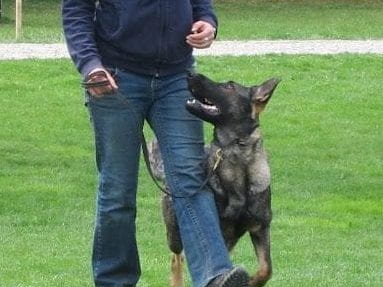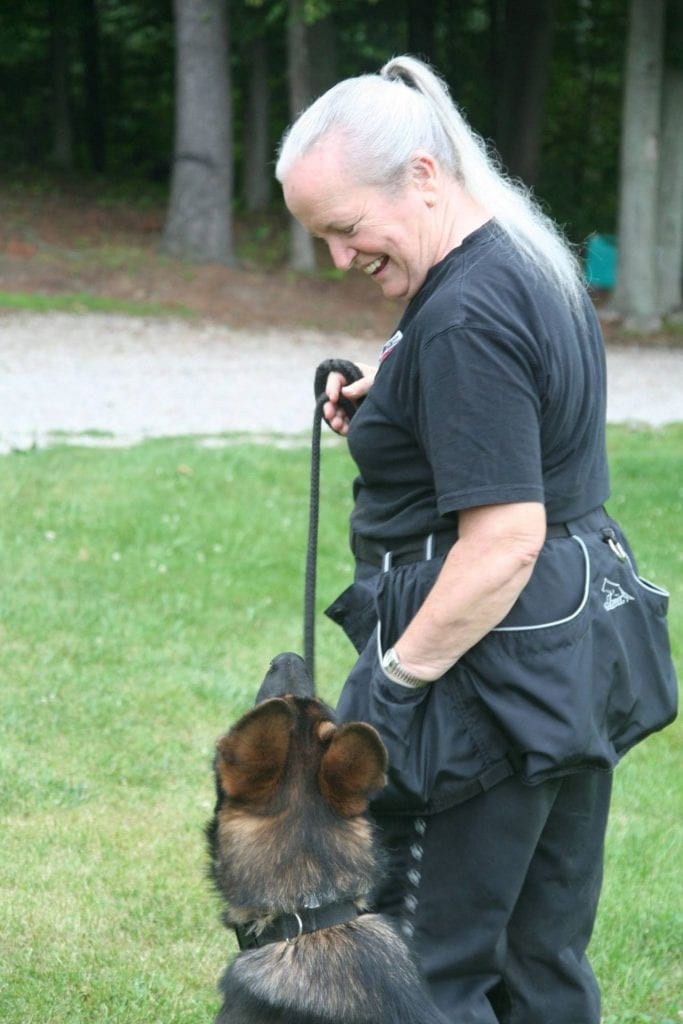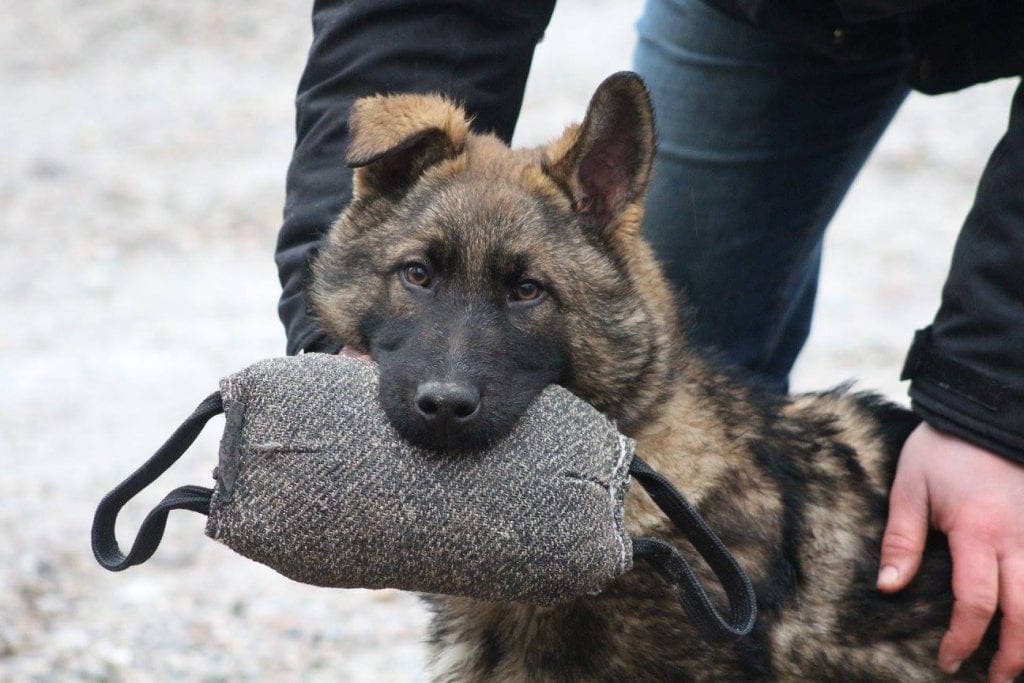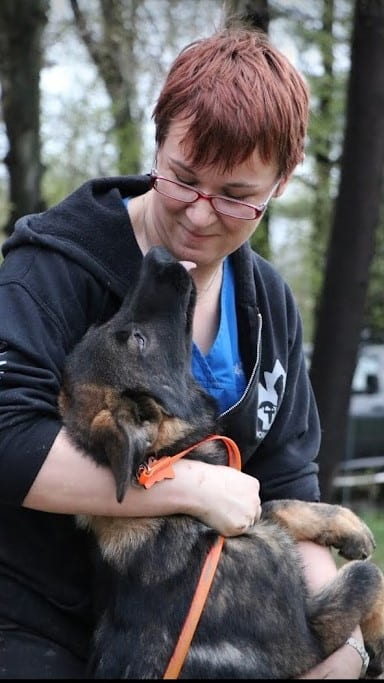We know that taking home a dog is a lifelong commitment. A trained dog is a happy dog, with ongoing training a cornerstone of that lifetime of care. With more families welcoming dogs into their lives for the first time, some basic nutrition training tips can help keep them healthy in both mind and body.
When you have a dog it’s so important to find what drives them to perform. This can be toys, affection, but most often its food! Keep in mind that too much of a good thing can be a bad thing! The issue with treats outside of a normal meal is they pose the risk for weight gain in your pet, which can lead to obesity. Too many treats could also predispose your pet to malnutrition as most treats are not complete and balanced with essential nutrients.
While the short-term benefits of exercising their mind and teaching them desirable behaviours is great, the long-term consequence of obesity can be associated with other health problems, including osteoarthritis, renal disease, skin disease, insulin resistance, and neoplasia in dogs.

Step 1: Calculating your dog’s daily treat budget
Just like humans, dogs require a certain number of calories per day in order to supply enough energy to maintain a healthy body weight. It’s best to consult with your veterinarian to determine how many daily calories are best for your dog based on their activity level, current body weight and body composition, breed, and neuter/spay status. They can then calculate your pet’s feeding amount, or food dose.
For responsible treating, it is important to keep in mind the 10% rule. This entails keeping any food outside of your dog’s daily meals to no more than 10% of their daily caloric intake. The majority of your dogs’ calories should be provided by a complete and balanced food, at least 90% of their daily needs.
You can also check your dog’s current dog food; kibble, wet food, fresh or raw food, as it should have a kcal/kg amount and a recommended feeding guide on it. This feeding guide is a guideline that is based on the energy density of the food and the estimated caloric requirements for a dog of that body weight. The feeding guide can be a good starting place, but it is based on estimations only. Your pet is an individual, so adjustments may be required to maintain your pet’s body weight. When adding treats, reduce the amount of food they are being fed by 10% to allow for treat calories.
If your pet is eating a veterinary therapeutic diet, requires dietary restrictions, or is on a weight loss program, please check with your veterinarian prior to starting a new treat. Even small amounts may disrupt their treatment plan.
Step 2: Choose your treat
Treats that are often used for training include store bought dog treats, biscuits, freeze-dried liver, hotdogs, cheese, and peanut butter; all of which are high in calories and fat which can add up quickly when training your dog.
This is especially true for small dogs who require far less calories than a large dog, or puppies. The key is to find something that is lower in calories that will still motivate your dog and give them a reward for presenting desired behaviors, without surpassing the treat budget.
Now that you know your dog’s daily caloric needs, there are a few options when it comes to maximizing treat dispensing.
Option #1- Low Calorie (Human) Treats
Most dogs will work for vegetables and fruits including cucumbers, red peppers, strawberries and apples. Cut these into small pieces and dispense them as needed. Other options are carrots, frozen green beans, cooked sweet potatoes, watermelon, air-popped popcorn, or berries. You can also use pumpkin puree (not pumpkin pie filling as this is high in sugar and salt) and fill up a syringe (with no needle!). As you train, dispense small amounts for your dog to lick off the syringe, and you have an on-the-go treat solution! The calories in human treats could be found in the Canadian Nutrient File.
Just remember, some human foods are unsafe for dogs. For more information, review our Tricky Treats post.
This is great for keeping their calorie intake down, but this may not work for all dogs, especially the pets with a more refined taste!
Option #2 – Low Calorie Training Treats
Another tactic is to use training treats which you can get at any pet store or your veterinarian. These are small, dry or semi-moist morsels that are 3-5 calories per treat and can be given in larger quantities than standard treats like biscuits. You can also break these morsels into thirds, making them go even farther and easier to dispense quickly. If you are unsure, verify the calorie content on the packaging prior to feeding.
Option #3 – Use Your Dog’s Food as Treats
Simply measure out the amount of food you would feed normally and use this as your training reward! The best tactic to cut out extra calories and ensure ideal nutrient intake is to use your dog’s own meals as training treats.
Dry, cooked kibble offers the most versatility here, as it can be simply popped into your treat pouch or your pocket. You’re ready to go with your pre-measured treats! As the kibble is shelf-stable, it can be safely stored in your pocket for an entire day of training, even in the heat!

Other options such as wet, semi-moist, raw, or homemade food can be used, but training time should be limited as unrefrigerated perishable food should be eaten immediately or discarded after 1 hour. The syringe tip above could also be used with the following diet options.
Canned diets can be messy to use for training, but can be formed and baked in your oven to make your own treats. Although these diets are balanced going into the oven, baking will alter some essential nutrients, so the 10% rule still applies. This can be a great option for pets on a veterinary therapeutic diet, or other dietary restrictions.
Some cooked semi-moist diets, usually packaged in rolls, also make excellent treats for dogs who do not usually eat these diets, providing a higher level of reward for your dog, and less mess for you! Most are complete and balanced, meaning the added benefit is they may be fed in excess of 10% of the daily caloric intake, if this diet is also appropriate for your dog’s health and life stage. Even if they are not refrigerated at the store, they must be covered and refrigerated after opening, similar to opened canned diets. They will also have a limited shelf life when opened, so be sure to follow the package instructions on storage.
If feeding a raw meat-based diet, consider the use of freeze-dried diets to reduce the mess. When using the raw diet as a treat, the likelihood of prolonged exposure to bacterial contaminants is much higher in training than feeding, increasing the risk of food poisoning to the dog handler. The use of disposable medical gloves is highly encouraged, along with a large, stainless-steel tablespoon to avoid handfeeding. A different reward should be used for dogs with poor bite inhibition, as they may accidently cause wounds while taking food, providing an additional risk of infection. Consider the use of an easily cleaned treat pouch, such as silicone or rubber. Professional dog-training vests, pants or kilts may include removable, waterproof inserts to be cleaned after each training session. As with all handling of raw meat, training equipment, leashes and hands should be washed after each session. Unrefrigerated portions of fresh or thawed raw diets must be fed or discarded immediately. For more information on reducing the risk of pathogen exposure, see (CAVN infographic link). Some raw diets are balanced, but many Canadian raw meat-based diets are not, so make sure to double check this with your veterinary team to assure your dog is receiving all required nutrients. For more information, see our post on pet food labels.

DISCLAIMER Feeding a raw meat-based diet carries a risk of pathogen exposure to human family members and pets. These directions are provided to reduce, but will not eliminate this risk. Pet families are encouraged to discuss these feeding practices with both their own physicians and their veterinarian. We do not endorse the feeding of any diet or diet type. As always, your pet’s veterinarian and veterinary healthcare team should be consulted prior to any diet change and for the assessment of your pet’s diet and health.
Similar to raw diets, fresh and home-prepared cooked diets can also be used for training. The use of reusable silicone or freezer bags can reduce the mess, with the inclusion of gloves if preferred. Keep in mind that also these diets have limited shelf-life when not refrigerated. Homemade diets are only balanced when the recipe is appropriately formulated, so in most cases the 10% rule still applies.
No Free Lunch!
You can wait until just before mealtimes, when your pet will be especially hungry, and do some training with their food. Don’t spoil their training dinner, only a hungry dog is a food-motivated dog. Using their diet as their reward
can work very well for new pets or puppies, who are constantly training and receiving a lot of rewards to enforce their good behavior.
Step 3: Prepare your treat allotments
It may sound simple, but this can make a huge difference in ensuring your pup is not being overfed. It can be hard to count calories throughout the day, so preparation can help to set you and your pet up for success. Ensuring you have treats when you need them, and not overfeeding, will ensure your pet receives the right rewards, in the right amounts. Use the calorie requirements from Step 1 and weigh out – remember to use a gram scale- your pet’s meal to 90% of that, the left over 10% should be fulfilled by your treats.
For more information, read our previous blog on calculating a treat allotment for your pet.
Training Gear Safety
Treat all food delivery items, such as your food-pouch, training-vest, pocket, or pack as a bowl. Food residue from kibble and especially from unrefrigerated perishable food, can spoil and cause illness, so should be cleaned after each use with hot, soapy water. Porous fabric should be washed after each use. They may still carry some scent of food, so be sure they are stored out of reach from your pet. Chewed and ingested treat pouches and bags may cause intestinal blockages, resulting in illness or even require lifesaving surgery.
There is more to life than food!
It may sound crazy, but you could leverage your dog’s response to non-food items as a training tool! If your dog responds well to general praise, this could be excited, verbal praise, lots of scratches, playing tug with a favorite toy, going on a walk etc., then you can use this to your advantage and use to complement or replace food rewards. They’ll realize when a desired behaviour is presented by your praise and excitement, and this can be their motivation. Some dogs are more excited by toys, play, and affection than food, so consider mixing up your rewards.

Side Note- Crate Training
Crate training is a beast of its own. This is a time when you want your dog to keep themselves busy and be ok with alone time in a small space, and food can still help. Once again, your dog’s meal is a great option. Rather than putting your dog’s meal into a bowl for them to eat quickly, put the food into a Kong, durable puzzle toy, or any other vessel that will make them work for their meal without posing a choking hazard.
You can try including something freezable with the kibble, such as wet food, broth, or even just soaking the kibble in water. Frozen Kongs are a great way to feed home-made and canned diets. Raw food works too, but keep in mind that raw food can easily spread bacteria in the dog’s crate or your house if it is no longer refrigerated. As noted above, ensure proper cleaning of the Kong, crate and all surfaces and utensils that came in contact with the raw meat (but also any other food). This can be messy, so bathing of your pet would also be encouraged.
Once frozen, the Kong is a great way to mentally stimulate your pup and help your dog realize that a crate is a great place! They will need to work to thaw the toy and retrieve their meal, while receiving a positive reinforcer while in their crate, not even realizing that they are away from all the action. For teething puppies, frozen Kongs can be especially beneficial as they will help to soothe their sore mouths, while providing an appropriate outlet for their need to chew.
To make this easier for you, try a “meal prep” approach for the week by filling Kongs with meals ahead of time, so you can just pop one in their crate before heading out. Before you know it, your dog will be excited for crate time and they will feel rewarded with their own meals!
Avoid Excess
Too much of a good thing, is a very bad thing! This goes for food, as well as training length. Make sure your dog does not lose motivation by making your training sessions too long. Keep them short (and sweet), rewarding, and most of all fun! A great rule of thumb is 1 minute per month of age of your puppy, to a maximum of 5-10 minute training sessions for adults. Training is a great time to bond with your dog, so enjoy the process!
Happy training!

References:
Loftus, J. P., & Wakshlag, J. J. (2014). Canine and feline obesity: a review of pathophysiology, epidemiology, and clinical management. Veterinary medicine (Auckland, N.Z.), 6, 49–60. https://doi.org/10.2147/VMRR.S40868
Authors:
Written by:
Jessica Fletcher, BScAgr, MSc Student (Department of Clinical Studies)
Edited by:
Shoshana Verton-Shaw, RVT, VTS (Nutrition)
Dr. Adronie Verbrugghe, DVM, PhD, Dip ECVCN
Hannah Godfrey, BScH, MSc, PhD Student (Department of Clinical Studies)


